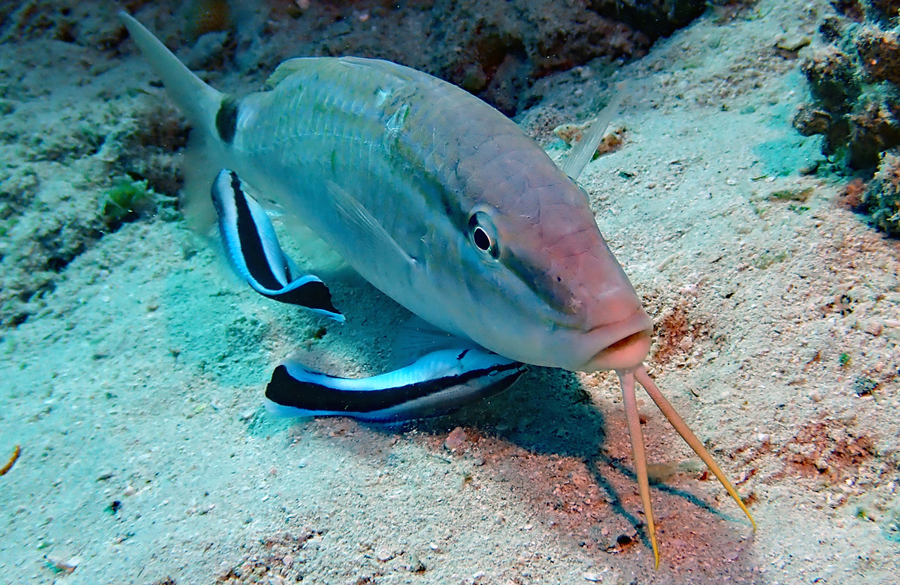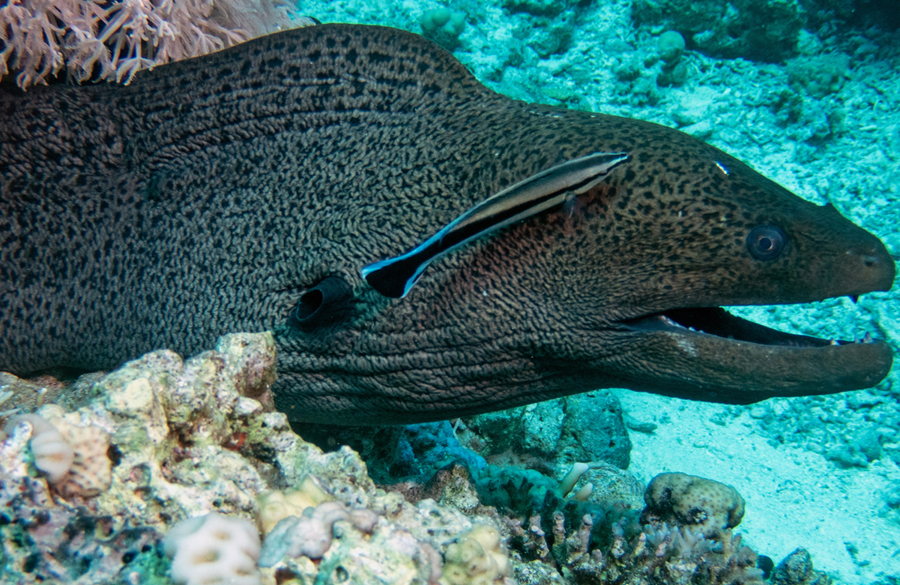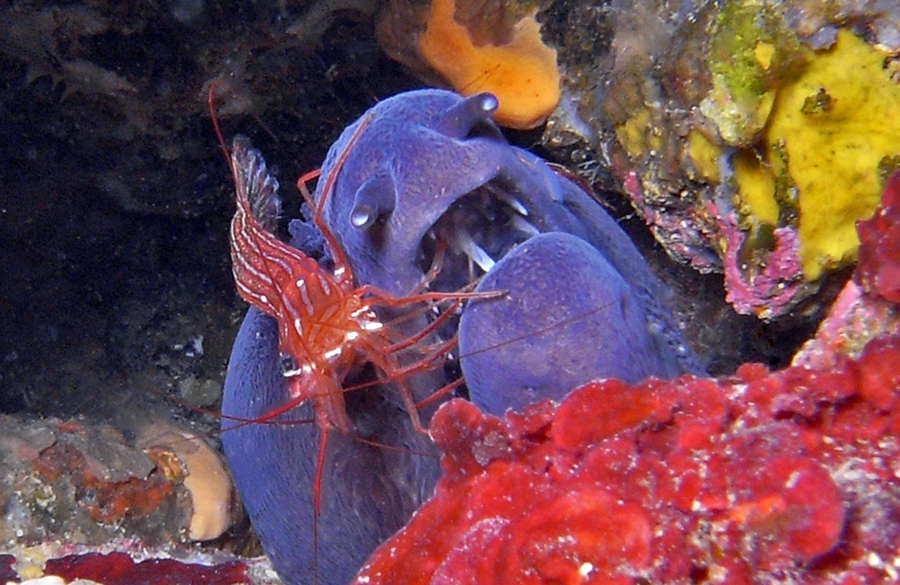CLEANING STATION
Do fish clean their bodies, gills and teeth?
YES. The question is: how do they do it? After all, they have no hands.
Mother Nature has once again come up with something clever. The cleaning station.
These are the places that fish go to get cleaned. The cleaning team waits there to do their work. These are either cleaner fish or cleaner shrimps.
They eat the parasites from the body, gills and even the oral cavity of the fish that wants to be cleaned. This is called cleaning symbiosis.

Lemon barbs (Parupeneus cyclostomus) with common cleaner wrasses (Labroides dimidiatus)
A prerequisite for this cleaning symbiosis is communication between the participants. How does the small cleaner fish know that it can approach the large fish without being eaten? The fish that wants to be cleaned swims to the cleaning station and signals by spreading its fins, opening its mouth and gills that it has not come to eat but wants to be cleaned. When it has had enough, it shows this by twitching and leaves the cleaning station.
The cleaner fish signals that it is ready to clean by its coloration and special swimming style.
Observations of cleaner fish have shown that they can clean up to 2000 fish per day, removing 4 to 5 parasites per minute. Pretty hard-working guys.
They are also clever. They remember which fish they have cleaned and serve them first before accepting new customers.
The best-known cleaner wrasses are the cleaner wrasses (Labroides dimidiatus).
You can come across cleaning stations on practically every dive.

It's fun to watch the lemon barb being cleaned by two cleaner wrasses.
The moray eel is also one of the cleaner wrasse's customers.

The cleaner fish not only clean the teeth of the fish, but they are also not afraid to subject the teeth of a diver to dental care.

Good thing they are real cleaner fish.
There are also imitators, the false cleaner fish (Asipidontus teaniatus).
It looks very similar to the real cleaner wrasse. Both are 12 cm long when fully grown.

The false imitates the coloration and swimming style of the real one. This is how it attracts fish that want to be cleaned. However, it does not clean them, but bites off pieces of their fins and skin.Quite mean.
Not so the cleaner shrimp. It cleans the teeth of its customers without biting them.

Among them is the moray eel. It is possible that the fine antennae and delicate little legs on the face may tickle a little during tooth cleaning, but in any case, it is certainly more pleasant than a visit to the dentist.
Photos: Johann Vifian
Sources: Wikipedia
